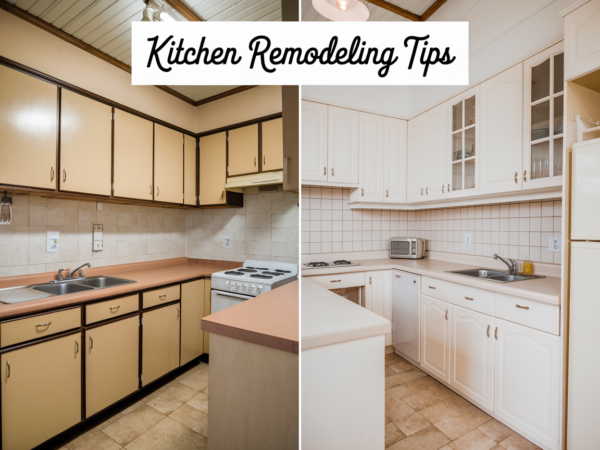
Why Does Urine Smell Linger in Bathrooms? 🤢 The Gross Truth You Can’t Ignore
If you’ve ever cleaned your bathroom top to bottom and still caught a whiff of that stubborn, stale pee smell… you’re not imagining things. I used to think I was just missing a spot—maybe under the toilet seat, maybe behind the base—but after way too many failed scrubbing sessions, I finally dug into what’s really going on. And spoiler alert: it’s nastier (and sneakier) than you think.
The Science Behind the Stink: Bacteria + Urea = Ammonia 💥
Let’s break this down in plain English. When urine hits surfaces in your bathroom—whether it’s the floor, baseboards, grout, or even microscopic crevices—it doesn’t just sit there politely. Bacteria go to work on the urea (a compound in pee), and they break it down into ammonia gas, which is that sharp, unmistakable odor that tends to slap you in the face after a hot shower.
The worst part? Ammonia intensifies in warm, damp environments, meaning your bathroom’s pretty much a stink factory if it’s not treated right.
👉 I finally got rid of that nasty odor using this simple trick to eliminate urine smell from the bathroom 💥 You’d be surprised how many cleaners miss the most obvious sources.
Where It’s Hiding: The Sneaky Pee Traps in Your Bathroom
I used to think cleaning the toilet bowl and floor was enough… until I pulled the toilet tank lid off and found that smell coming from inside it. Yup—urine particles can aerosolize (aka float around) and settle in places you’d never think to check. Here are the biggest offenders:
- Grout lines – Porous and absorbent. Major smell trap.
- Toilet base seal – Especially if it’s old or leaking. Smell gets under it.
- Under the seat bolts – If you haven’t taken off your toilet seat lately… brace yourself.
- Floor trim and walls – Splash zones are real, especially with little boys.
If your bathroom still smells even after a deep clean, check those spots.
Why Air Fresheners Don’t Cut It (and Can Make It Worse)
I fell into this trap more times than I’d like to admit. Air fresheners, wax melts, and sprays only mask the smell. And once they fade? That sour, ammonia scent comes back even stronger. You need to attack the actual bacteria, not just throw some lavender on it.
I’ve had the most success using natural enzyme-based cleaners that break down the urea for good. Check out this tip-packed guide on fixing bad toilet water smells if your toilet itself is part of the problem.
Quick Tips to Keep the Bathroom Smelling Fresh (for Real)
- Seal your grout – If you haven’t sealed it, it’s probably holding old pee smells.
- Use a blacklight – Seriously. You’ll find hidden spots you’ve been missing.
- Wipe vertical surfaces too – The sides of toilets, baseboards, even the wall behind it.
- Add ventilation – That ammonia gas thrives in humidity. A good fan helps big time.
- Regular deep cleans – Including under the seat, the tank, and behind everything.
And if you’re on a roll with bathroom fixes, this guide to transforming your vanity into a rustic industrial showpiece is worth a peek while you’re already deep cleaning.
How I Finally Solved It: Step-by-Step Pee Smell Fix That Actually Worked
After wasting time (and money) on every “odor-eliminating” spray at the store, I finally figured out a real process that got the smell out for good. Not temporarily masked. Not hidden behind citrus. Actually gone.
Here’s what worked in my home:
1. Start with a Targeted Deep Clean (Not Just a Wipe-Down)
I used to just mop and spray, but the smell always came back. Turns out, the smell was trapped in the toilet base caulk, under the seat hinges, and in the grout. What finally helped:
- Remove the toilet seat and clean under those bolts
- Use an old toothbrush to scrub around the floor bolts and wax seal edge
- Spray a natural enzymatic cleaner directly on the grout lines (let it soak 10+ minutes)
Enzyme cleaners are key — they break down the urea instead of just covering it up.
👉 Here’s the trick I used to eliminate urine smells completely. Game changer.
2. Hit the Ventilation (Or You’ll Be Back at Square One)
Warmth and humidity are ammonia’s best friend. I realized the smell always intensified after showers. That’s when I installed a better exhaust fan — one with a humidity sensor so it runs on its own. Massive improvement.
If your exhaust fan’s weak or old, it’s time to upgrade. While you’re at it, check out these tips for improving air quality throughout the house.
What to Avoid (Mistakes That Make Bathroom Smells Worse)
I made some rookie mistakes that literally made my bathroom smell worse. Avoid these:
❌ Using Bleach on Grout
Bleach smells clean but doesn’t break down urine. In fact, if mixed with lingering ammonia, it can release chloramine gas—dangerous stuff. Stick with enzymatic products or natural solutions.
❌ Overusing Air Fresheners
Plug-ins just dump chemicals in the air and coat your nostrils. They don’t clean anything. Over time, your nose gets used to them, and the urine smell is still there—festering.
❌ Ignoring Your Shower Curtain or Bath Mat
Urine particles float in the air and settle on everything. I didn’t realize my bathroom rug was holding onto that smell until I replaced it. Wash or swap them out regularly.
When It’s Not Pee: Other Bathroom Smells That Trick You
A few times I swore I smelled urine, but it was something else entirely. If your bathroom still stinks after you’ve cleaned every inch, consider these culprits:
1. Rotten Egg Smell? That’s Likely Sulfur or Gas
A sulfur smell might mean you have bacteria in your drain lines or worse—a sewer gas leak. If that’s the case, check this helpful guide on why your house might smell like rotten eggs.
Also check out the most common causes of bad toilet water smells that sneak up on homeowners.
2. Toilet Running or Flushing Weirdly? You’re Losing More Than Water
Sometimes your toilet tank issues can cause strange smells and noises. Learn how to fix a toilet that won’t stop running before it leads to more moisture, mold, or hidden leaks.
Still Smells? These Rare Sources Might Be the Cause
You’ve cleaned everything. You’ve sealed the grout. The fan’s upgraded. Still noticing a weird lingering smell? Here’s what else to check:
🤯 Your Sewer Vent Pipe Might Be Clogged
I didn’t know this was a thing until it happened to us. When your vent pipe is blocked, sewer gas can build up and leak back into the house. Not only does it stink—it’s dangerous.
If you suspect this, don’t ignore it. Here’s how to spot the signs and what to do about a clogged sewer vent pipe.
💨 Check for Carbon Monoxide Risks
Believe it or not, some lingering air quality issues in bathrooms are linked to poorly vented appliances. Always check that water heaters, dryers, and HVAC systems are working safely. You can learn more in this guide on what causes carbon monoxide poisoning at home.
Final Fixes: My Smell-Free Bathroom Routine
This is what I do now every month to make sure that nasty odor never returns:
- Remove and clean the toilet seat hardware
- Deep-clean and reseal the grout every few months
- Wash bath mats weekly
- Spray enzyme cleaner under and around the toilet
- Run the exhaust fan after every shower
- Keep a small bowl of baking soda near the toilet base
Also, don’t forget to check out how to unclog hair-filled drains because buildup in pipes can also start to smell over time—especially when mixed with warm air and humidity.
Take Control of Bathroom Odors the DIY Way
If you’ve tried scrubbing and spraying but the smell keeps coming back—it’s not you. It’s the nature of how bathrooms trap odor. Once I understood that, and used the right tools, techniques, and cleaners, my bathroom finally stayed fresh.
Don’t wait for your guests to smell it first. Take back your bathroom, start with the simple odor removal solution, and fix it for good.
As an Amazon Associate we earn from qualifying purchases through some links in our articles.



